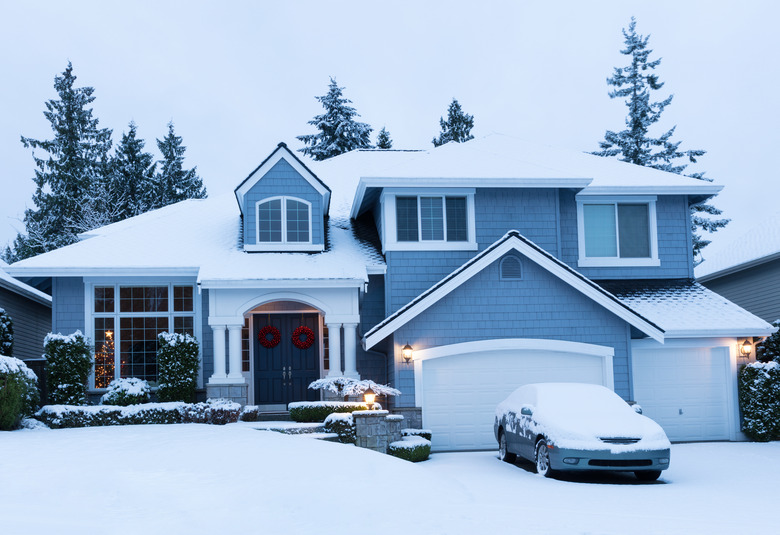What If Snow On The Roof Clogs The Vent Pipe?
We may receive a commission on purchases made from links.
Delicate snowflakes falling around your home can make you feel as if you live in a snow globe, but piles of snow can cause lots of issues for your home. A clogged plumbing vent pipe is one snowy-weather issue that can affect your toilets and drains. Safely clearing a clogged vent pipe without climbing on the roof is essential to restore your plumbing system's function.
Tip
If snow is clogging your plumbing vent, using a hair dryer to melt it safely from inside is the best solution.
Purpose of Vent Pipes
Purpose of Vent Pipes
Every home has a plumbing vent system that allows everything to function correctly. The main vent stack typically exits the home through the roof. Without the plumbing vents, water draining into your plumbing system would create negative pressure. That can affect how the water drains and sucks water out of the traps designed to prevent sewer gases from entering your home. A properly working plumbing vent helps regulate the air pressure in the plumbing system to prevent those issues, and it helps dissipate some of the sewer gases in your home.
Clogged Vent Pipes
Clogged Vent Pipes
Since the vent stack is on the roof, it's susceptible to clogging from a variety of sources. In the winter in snowy climates, a buildup of snow and ice can block the vent pipe and keep it from working properly. This can happen when you get a large amount of snow or if your roof is flat or has a low slope, making it difficult for snow to melt and drain off the roof. Throughout the year, your vent pipe can be clogged by animal nests, leaves, and other outdoor debris. When it becomes clogged, it can't regulate the air pressure in the system.
Some signs of a clogged plumbing pipe vent include:
- Slow-draining water that's not due to a drain clog.
- Sewer gas odors inside your home.
- Gurgling noises when water drains.
Dangers of Snowy Roofs
Dangers of Snowy Roofs
Your first instinct might be to climb to the roof to clear away the snow and ice, but you should never climb on a roof during winter. Roof work is dangerous even under ideal conditions. Any moisture, snow, or ice can cause you to fall off the roof. Try to spot the plumbing vent pipe from the ground to see if you can see snow or ice on it but avoid getting out your ladder for this work.
Clearing Snow From Inside
Clearing Snow From Inside
A safer option is to melt the snow from inside your home. You can often grab a hair dryer and head to the attic to clear the snow. Use the hair dryer to heat the vent pipe gently and melt the snow. Opening your attic door to let more warm air into the attic can also help.
While climbing on the roof isn't safe, using a roof rake can help you clear snow from the roof without a ladder. This telescoping tool allows you to pull snow off the roof while standing on the ground. Using it regularly can help prevent snow buildup and potentially resolve or prevent clogged vent pipes.
Preventing Future Blockages
Preventing Future Blockages
Slight modifications to prevent plumbing vent blockages can save you headaches with snow clogs. If snow blocks your plumbing vent frequently, hiring a plumber to put in a new vent pipe that's taller can help. Insulating the pipe as it runs through your attic can also help by keeping the vent warmer and reducing the risk of snow or ice buildup. Insulated vent caps and heat tape on the vent pipe in the attic are also options.
